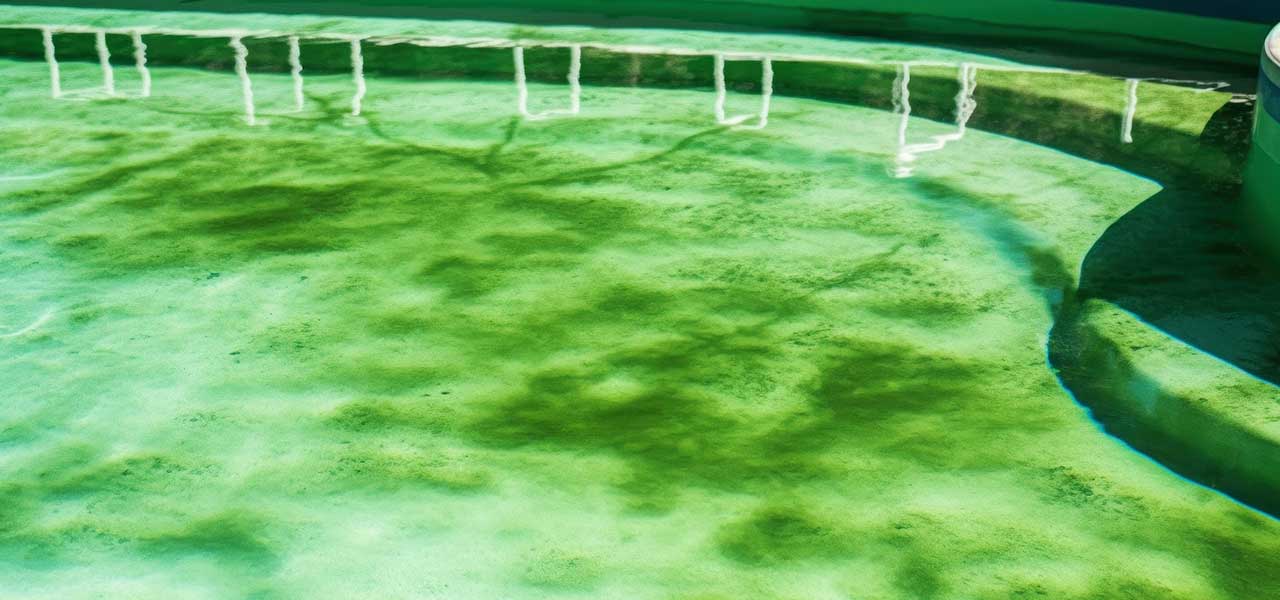FREE Standard Shipping On All Orders $100 or More!*

Is it Safe to Swim in a Pool with Algae?
Imagine waking up one morning with the desire to take a plunge into the refreshing nautical oasis that awaits you in your backyard. However, that desire is quickly diminished once you take a look at your pool water and discover that it’s got this green hue to it. The presence of algae in pool water can put a damper on things, but the desire to swim is still there.
So the question looms: is it safe to dip into the water, or does the presence of algae pose potential risks to swimmers? Let’s get this into this popular debate.

Pools Aren't Small Ponds
There is a major difference between pools and lakes, one that makes it OK to swim in a green lake, but not a green pool. Pools are closed systems, and other than occasional rain water or refill water, they are not continuously diluted. They also do not have a balanced ecosystem, like lakes or ponds with microscopic aquatic life, and plants that actually clean the water of toxins and bacteria.
Where There's Algae, There's Bacteria

Algae is not harmful by itself, and I've heard that for many people algae is a delicacy, and quite nutritious. It's what you don't see, however, that could make you sick. If there is not enough chlorine to kill the algae, there is certainly not enough chlorine to kill bacteria, viruses, parasites and other pathogens, which could possibly also be in the water. These can enter the body of a swimmer via a small skin cut, or through the eyes, ears, nose, and throat. The result of swimming in a green pool could be ear infections, fever, diarrhea, and other summer bummers.
When Is It Safe to Swim Again?

It's safe to swim in a pool when it's lost most of the green tint, the chlorine level is holding or staying constant in a range of 1 to 5 ppm, and your chloramine level (combined chlorine) is near zero. Double check the pH and alkalinity, and be sure the chlorine level is below 5 ppm. Even if the water is not completely clear, but more of a cloudy blue-ish color, you could allow limited swimming. If the water is so cloudy that you cannot see the pool bottom, however, that poses several safety risks for swimmers.
And if you have recently shocked the pool with granular chlorine, follow the label instructions about when it's safe to swim. Undissolved granules could irritate the eyes and skin of swimmers. Some pool shock products are ''swim immediately,'' and others suggest a 12-24 hour waiting period before swimming.
And remember to run your filter system 24/7 when trying to clean up algae or cloudy water. Don't worry - it won't explode! Just check on it 2-3 times per day, and backwash when the pressure gauge is 7-10 lbs over clean. 2 to 3 days after a hard shock treatment, you can begin to use algaecides and clarifiers, per label instructions, to help out your filter and help prevent a re-bloom of algae. If your filter is really struggling with clearing the water, you may need a new sand or cartridge, or a larger pool filter.
At the end of the day, don't swim in a green algae pool. And not because of the algae, but because of the possibility of pathogens also found in the pool water. If you must swim in a green pool, however, we suggest keeping heads above water at all times, and taking a shower after you enjoy a very short swim.